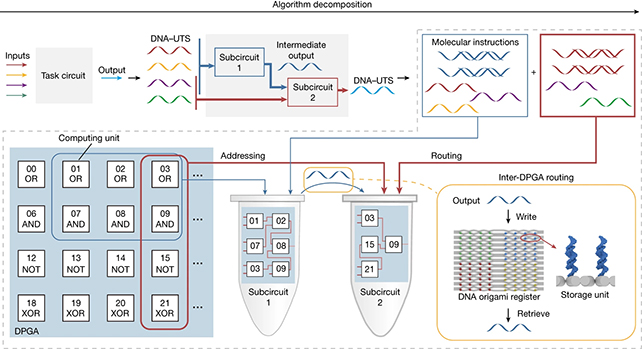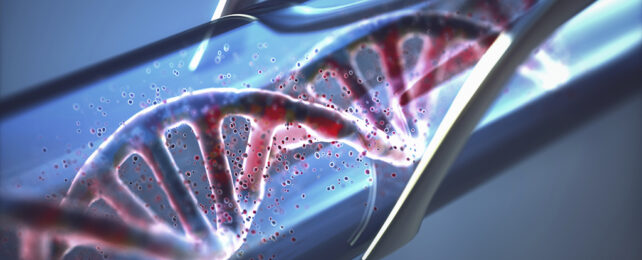For eons, deoxyribonucleic acid (DNA) has served as a sort of instruction manual for life, providing not just templates for a vast array of chemical structures but a means of managing their production.
In recent years engineers have explored a subtly new role for the molecule's unique capabilities, as the basis for a biological computer. Yet in spite of the passing of 30 years since the first prototype, most DNA computers have struggled to process more than a few tailored algorithms.
A team researchers from China has now come up with a DNA integrated circuit (DIC) that's far more general purpose. Their liquid computer's gates can form an astonishing 100 billion circuits, showing its versatility with each capable of running its own program.
DNA computing has the potential to create machines that offer significant leaps in speeds and capacities, and – as with quantum computing – there are various approaches that can be taken. Here, scientists wanted to build something that was more adaptable than previous efforts, with a broader range of potential uses.
"Programmability and scalability constitute two critical factors in achieving general-purpose computing," the researchers write in their published paper.
"Programmability enables specification of the device to perform various algorithms whereas scalability allows the handling of a growing amount of work by the addition of resources to the system."
To work towards this, the team focused on what they called DNA-based programmable gate arrays, or DPGAs: short segments of DNA fixed together to create larger structures, that could then be built into integrated circuits of various combinations.
These DPGAs were made by mixing DNA strands with buffer fluid in test tubes, relying on chemical reactions to make the attachments, and the combinations required to build the DICs that the researchers were aiming for.
Some detailed modeling was required too, in order to figure out how to manage input and output signals, and execute logic functions, just like a standard computer. Larger circuits too big for a single DPGA were broken down into component parts for building.

Through the course of their experiments, the scientists were able to create circuits for solving quadratic equations and square roots, for instance. Further down the line, these systems could be adapted for purposes such as disease diagnosis, the researchers say.
What's more, the experimental systems showed little in the way of signal attenuation, or the gradual loss of the strength of a signal as it travels. That's another key part of being able to build DNA computers that can scale and adapt.
We're still a long way from realizing the full potential of DNA computing, but in the last few years scientists have made significant steps forward in modifying this biological form of storage to use it for conventional computing tasks.
"The ability to integrate large-scale DPGA networks without apparent signal attenuation marks a key step towards general-purpose DNA computing," write the researchers.
The research has been published in Nature.
